The Challenges of Digitalizing Research Data Management
“Making the right choice of system is key if you don’t want your scientists to stick to paper notebooks or Excel files.”
Interest in the options for handling research data with software seems to follow the same trajectory as the amount of data generated by life science research laboratories. In other words, it’s skyrocketing. In a recent webinar, Scifeon founder and CEO, Thomas Boesen, offered some valuable advice for research laboratories wanting to maximize the value of their research data by digitalizing their research data management. Making the right choice of system is key if you don’t want your scientists to stick to paper notebooks or Excel files.
A question of scale
If anyone needs to be convinced of the need for digitalizing research data management, simply consider the ongoing explosion in data output from life science. By 2025, it is predicted to dwarf the output of research in Astronomy and even that of YouTube:

If you’re running a lab without a database for handling all this, you’re probably keeping all your data in Excel files or similar. And while that does give you flexibility in the handling of data, doing everything from processing, aggregation and sharing to collaboration manually also poses some very serious problems:
- Waste of expensive time
- Lack of data quality and integrity
- Need to manually aggregate data before analysis
- Missing out on potential value in data
- Unable to locate data without the author
- Longer time-to-market
…and the more data your research lab generates, the bigger each issue becomes.
“Flexibility and customization are key. Make sure you don’t end up with a system that is perfect for any other research organizations but your own.”
Thomas Boesen, Founder and CEO, Scifeon.
Integrated Data Flow
Many research labs have begun using software to make data management more manageable. Some labs use LIMS (Laboratory Information Management System),
ELN (Electronic Laboratory Notebook), Bioregistry (structured metadata repository for biological records), or sometimes Workflow (a system for managing laboratory and research processes) – or a combination of the four. As experiments move from planning through lab work to analysis, data starts building up in each system on every stage. So even if your research lab has moved all data into databases, you still end up with data spread across a number of different systems that need to be aggregated manually.
So, rather than having ELN, LIMS, Bioregistry and Workflow set up as separate systems where registration takes place in various places and data is combined manually, we recommend a single system approach that automatically structures your information.
Flexibility and customization are key
Any database system will have some assumptions about the structure of your work. Most LIMS are notorious for being hard to set up and very inflexible. They are well suited for large analytical laboratories but not for research labs. That is what makes it so important to choose a LIMS that is designed for research labs and can accommodate the highly variable processes in life science research and grow with your research activities. Otherwise, you run the risk of adapting your work to the system, instead of the other way around. And that will only ensure that your scientific staff will stick to Excel sheets or pen and paper.
For more details and in-depth explanations, the Scifeon webinar is still available for viewing here.
